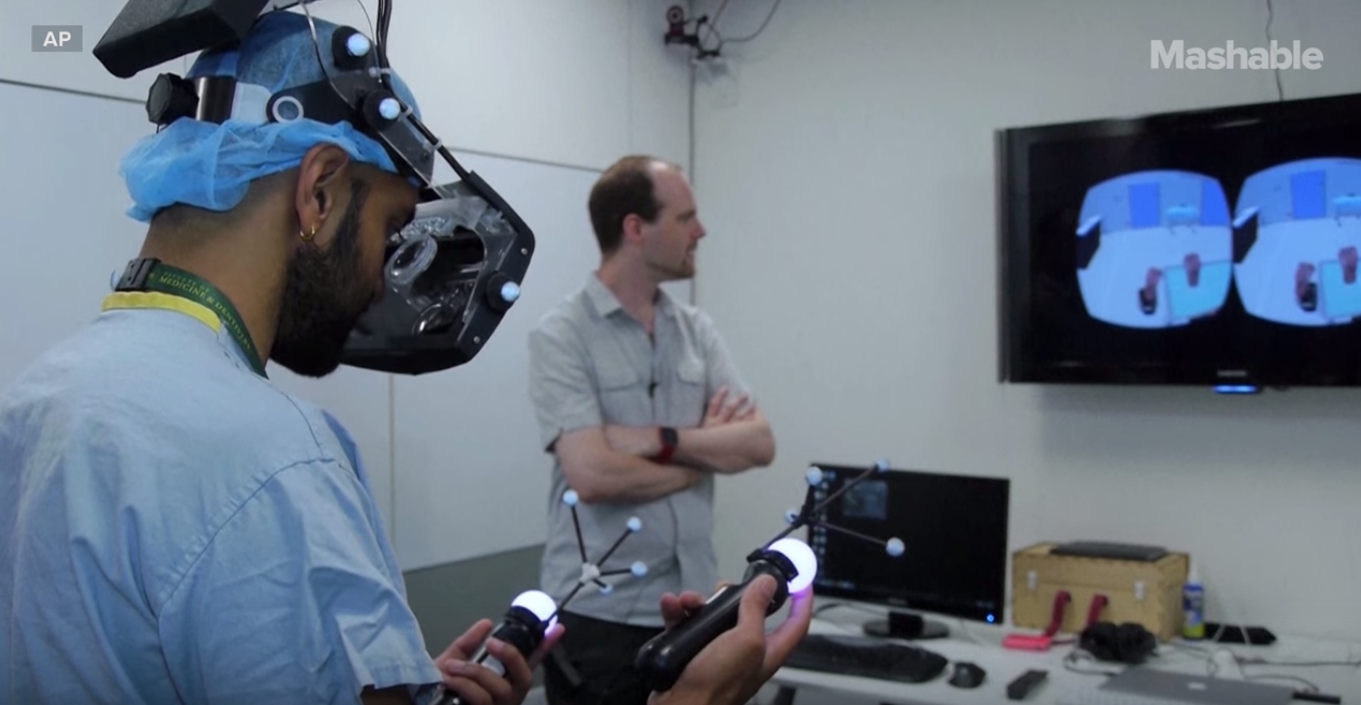Pediatric cardiologists at Lucile Packard Children’s Hospital Stanford are taking inspiration from the video game and consumer technology industries to leverage virtual reality (VR) as a vital tool for providers and patients alike. The Virtual Reality Program at the Children’s Heart Center is going beyond gaming with three VR projects that are already improving patients’ education, health and hospital experience and helping physicians treat cardiac patients more effectively, according to a statement.
“Because we are situated in Silicon Valley, we are in an ideal position to be a vanguard in this space and to partner with the companies that are on the cutting edge of this technology,” says Stephen Roth, MD, MPH, chief of pediatric cardiology and director of the Children’s Heart Center.
There are numerous ways that care teams at Packard Children’s are introducing VR use in the hospital. The Children’s Heart Center, which performs about 2,000 cardiac procedures each year, has several projects aimed at developing and testing some of these groundbreaking VR tools, each of which addresses a unique component of cardiac care:
-
Project 1: The Stanford Virtual Heart — Revolutionizing education for congenital heart defects | The Stanford Virtual Heart allows users to “teleport” inside the heart to understand complex congenital heart defects, which can be some of the most difficult medical conditions to grasp. Users wear a VR headset and engage handheld controllers to rotate and inspect the heart’s different pieces, understand the circulation of blood throughout the organ, and see where defects exist, allowing patients and families to more easily understand how their specific defect would be repaired, and for trainees, the program’s immersive experience is revolutionizing medical education.
-
Project 2: Project Brave Heart — Pilot study exploring the impact of VR therapy | Project Brave Heart is a pilot study exploring the use of VR for “stress inoculation therapy” aiming to help young patients mitigate pre-procedure anxiety through cognitive behavioral therapy techniques. The Project Brave Heart VR experience leads study participants — patients ages 8-25 who have planned cardiac catheterization procedures — through a virtual tour of what they will experience on the day of their procedure. Throughout the virtual tour, patients also have opportunities to enter therapeutic VR relaxation and meditation experiences during moments of stress or anxiety.
-
Project 3: 3-D virtual imaging technology inside the operating room helps surgeons map their route | VR technology is allowing pediatric cardiac surgeons to do a virtual run-through of a procedure before surgery using 3-D models that are constructed from CT and MRI scans.True3D virtual imaging technology is being used to digitally convert computed tomography (CT) and magnetic resonance imaging (MRI) scans into 3-D images that can be viewed prior to surgery as well as in the operating room. “When you print an anatomical model using 3-D printing techniques, you can cut the model open once and that’s it,” says Frandics Chan, MD, PhD, associate professor of radiology at the Stanford School of Medicine. “In virtual reality, you can put it back together, cut it again in a different place and magnify it with the flick of your hand.”
Although all three cardiac VR programs are in the early phases of implementation, doctors’ sights are set on how VR can be expanded across the hospital’s departments in the future. According to a statement from Stanford Children’s Health, once The Stanford Virtual Heart program is complete, there’s potential to develop a comprehensive VR education lab at Packard Children’s where patients with all types of conditions — cancer, neurological diseases, hearing issues and the need for organ transplants — will be able to learn more about their conditions using the technology.


